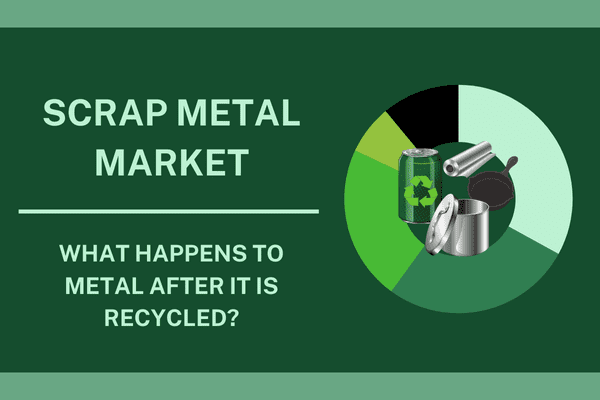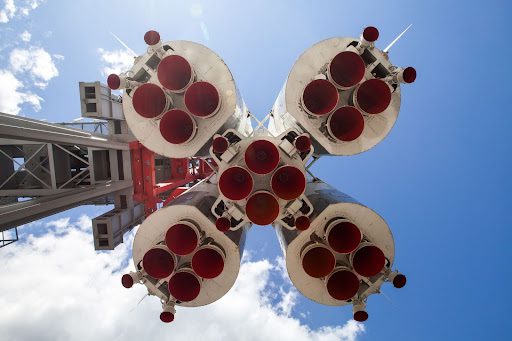
There is high demand right now for scrap metal. And projections are that there will be continued growth in the field of scrap metal recycling this year.
The Institute of Scrap Recycling Industries has the numbers to back it up. A study they commissioned highlights the significant economic and environmental impact the scrap metal recycling industry has on the U.S. economy.
When the Institute studied scrap metal recyclers in 2011, they found that the industry processed 74 million metric tons of steel and iron scrap in the U.S. That added up to a value of more than $35 billion.
By 2017, the total economic activity generated by scrap recycling in this country had soared to $117 billion.
What does this mean? There have been plenty of efforts to educate individuals, businesses, corporations and government agencies on the problems caused when scrap doesn’t get recycled or is either tossed in with regular trash or left to rust due to weather conditions. A lot of those concerns are environmental, particularly the fact that scrap contains toxins that can pose risks to the soil and water supply if left to pile up in landfills.
But there’s another, equally important message to get out, and that’s the positive benefits of recycling scrap. Most of those benefits go not only to the environment, but also to our economy.
How does the scrap metal industry impact our economy?
The ISRI study examined different kinds of economic activity, including jobs and exports, that are directly impacted by the scrap metal recycling industry.
This industry has become a powerful economic engine. It’s created 534,506 jobs and generated $13.2 billion in tax revenues for state and local governments.
For example, the study estimated the impact that scrap metal recycling has in Florida. The total economic impact in the Sunshine State was $7,560,589,700, which includes the creation of 35,872 jobs that add up to more than $2,089,429,900 in wages and $834,671,800 in taxes paid.
In Michigan, there is a $3,869,322,100 economic impact from the industry, which includes 19,245 jobs providing $1,178,065,700 in wages and $422,647,300 in taxes being paid.
Why is this industry doing so well? The Scrap Metal Recycling Industry is engaged in the collection, processing and recycling of scrap. That includes ferrous metals like steel and iron, and nonferrous metals like copper, nickel and aluminum.
Scrap is in high demand for use in manufacturing everything from cars to airplanes to ships and railways. After procuring the scrap, the recyclers move to the process of sorting, shearing, shredding, torching and baling scrap metal so it can be sold for further processing.
The supply chain for recycled scrap includes industries like:
• Aircraft, engine and parts manufacturing
• Boat building
• Construction machinery manufacturing
• Aluminum manufacturing
• Iron and steel manufacturing
• Missile manufacturing
• Tractors and agricultural machinery manufacturing
• Trains, subway and transit car manufacturing
• And wired telecommunications carriers.
Reusing scrap metal offers significant cost benefits to manufacturers, who can then pass those savings on to consumers. Scrap metal is a vital raw material in the production of steel, cast iron and other metal products.
Will the industry stay strong in 2018?
The outlook for scrap recycling, scrap steel prices and steel price trends is strong this year. Last fall, the World Steel Association released its October 2017 Short Range Outlook, which projected that global demand for steel would increase in 2018, following a similar rise in 2017.
They predict that steel demand would slow a bit in China but rise in the rest of the world, boosted in part by the strong U.S. economy, including rising consumer spending and increased business confidence. That’s led to solid product demand as the global economy improves. It also means that raw materials cost more.
Manufacturers are facing price increases for steel, copper and other raw materials, which is going to make recycled scrap even more appealing, since the process of recycling is far less expensive than mining for ore.
Today, about half of the metal used in manufacturing comes from recycled scrap material, and demand is strong enough that scrap metal prices have also risen in recent years, driven by foreign demand for the material and a shortage of supply. That’s likely to continue as the economy gets stronger and demand for metal increases, which supports higher prices.
A separate report by Freedonia Focus Reports, titled “Steel Mill Products: United States,” forecast that U.S. demand for steel mill products would total 102 million tons by 2021, with demand coming via increased construction of motor vehicles and durable goods, and in metal packaging. The report also projected that construction of utilities and increased investment in repairing bridges would facilitate increased demand for steel.
How does this boost recycling?
Construction jobsites all generate one thing: lots of waste, including metal debris. But a commitment to recycling that scrap, rather than throwing it directly into a dumpster, can reduce end-of-project costs. There is a lot of real value in what may look like disposable junk. That can include leftover items like partial rolls of wire and steel conduit pipes.
It’s easy to manage your metal recyclables by partnering with a proven recycler like GLE Scrap Metal to manage all your end-of-project scrap.
At a time when steel and other metals are in high demand, that scrap on your site is going to prove valuable to a recycling firm – and to the manufacturers who will eventually be able to reuse that recycled metal.
Conclusion
GLE Scrap Metal is a premier scrap metal and electronic recycler that performs environmentally-friendly processing and recycling of all base and precious metals. This family-owned and operated business will purchase, process, and re-integrate all recyclable base metals, and is committed to a zero-landfill policy for scrap metals brought to us to help utilize natural resources and conserve energy.
The scrap that is brought to this full-service, all-in-one recycling company is eventually supplied to domestic mills and global end-users, so it can be transformed into new products.
To learn more, call GLE Scrap Metal today at 855-SCRAP-88 to request a quote.


